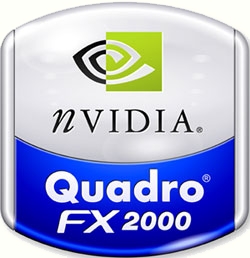Swift Acquittal: NVIDIA QuadroFX 2000
Tailgating In The Fast Lane
Pressure is the ratio of force to area. ATi is certainly feeling that pressure right now - at least in the OpenGL area. While the GeForceFX was remarkable in the consumer segment more for its vacuum cleaner-like acoustics and muscular design than for its superior performance, the workstation variant of the NV30 graphics card is more modestly packaged. With a slower speed and a slimmed-down cooling solution, it takes things more calmly. Pitted against seven other workstation candidates in this test, the QuadroFX 2000 shows that you don't necessarily have to forfeit any power.
3D Architecture
The QuadroFX is based on the same design as the GeForceFX (NV30). We already covered this AGP-8X-capable chip in detail in a previous article, NVIDIA GeForceFX: Brute Force Attack Against the King . The 3D processor, also called a visual processing unit (VPU), has 125 million transistors, making it twice as big as a Pentium 4 CPU. Like ATi, NVIDIA also requires a separate power supply.
Subpixel Precision
The subpixel precision of the QuadroFX is 12 bits. By comparison, the Quadro4 has eight bits. As for the others, the 3Dlabs Wildcat VP 3 and the ATi FireGL have four bits. Only the Wildcat 6210 and the 7210 feature a remarkable ten bits.
Pipelines And Filtering
In the drafting market, the geometry engine's performance is more important than the rendering. With a performance of 90 million triangles per second, the QuadroFX comes with plenty of backup. The FX is excellently equipped for heavy-duty rendering, too. The number of pixel pipelines has been raised from the Quadro4's four to eight. This uptick allows the FX to calculate eight pixels with one texture per speed. On the other hand, the Quadro GPU was able to process two textures simultaneously per pipe, while the FX pipes only one. In multi-texturing, the advantage is once again reduced. NVIDIA has also revised the filtering. The performance of the FX using trilinear and anisotropic filtering has been raised significantly.
Get Tom's Hardware's best news and in-depth reviews, straight to your inbox.

